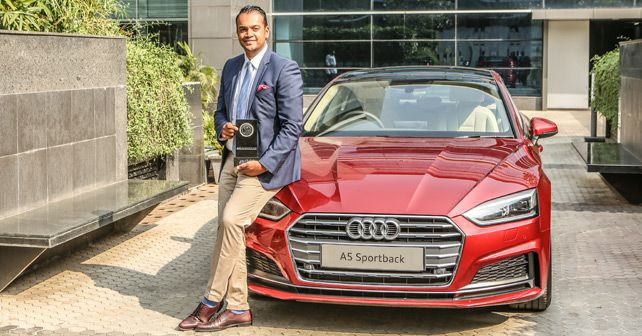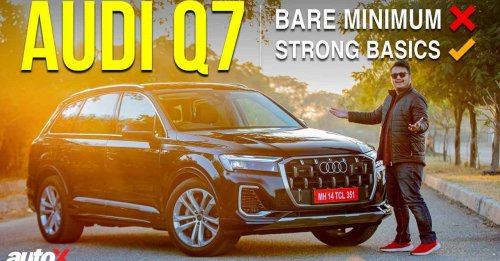
Audi A5 Sportback
Are you seeing demand shift from diesel to petrol-powered cars in India?
Yes, definitely! In 2015, we had a ratio of 90% diesel and 10% petrol-powered cars. However, this year, we’re looking at a 70:30 mix. So, there is clearly a growing demand towards petrol-powered cars in India. We’re counting on a mix of 50:50 by 2020, as well as the possibility of alternate fuels. This will depend on the development of EVs, but we are taking that into serious consideration.
What’s your expectation in terms of EVs, and how are you adjusting your product plans?
I think having a target is important, and 2030 is a courageous step. Having this target provides the opportunity to work towards a goal, as it provides a timeline. But what needs to be done is to create a roadmap, because launching an electric vehicle is easy – but the responsibility actually starts with creating the infrastructure to support it. The EVs currently available in the market have a realistic range of 90 to 120 kilometres. We’re looking at 500 kilometres for an EV. By the year 2020, we’ll be launching three EVs globally – and in subsequent years we’ll add at least one more EV to the range each year. By the year 2025, globally, we’re projecting at least 30% of total sales for electric vehicles. When it comes to India, we’ll be in a position to launch an EV by 2020. But we’ll only do so if the infrastructure is ready. There’s also a lot of work to be done from our side. For example, training our after-sales service team to be able to repair and maintain cars that house high-voltage batteries. Amongst our Indian manpower, we already have certified technicians in Audi India who have the expertise to work on these high-voltage batteries.
How has the introduction of GST been perceived at Audi HQ?
Overall, GST is a positive step. The approach to bring India under a uniform tax structure was the right step. This made things clearer, simpler, and more transparent for customers, industries and companies. However, the cess hike right after was not a favourable step for the industry, nor for consumers, as it left them confused with the introduction of more tax slabs. This didn’t help overall market sentiment. As for the HQ’s perspective, it wasn’t easy to explain because what we need is sustainability and consistency towards policies. Our business plans are based on existing tax structures. The change came in so quickly that it was not ideal. However, we do believe that this can be corrected over time to create a less complex structure – and also with some support for the luxury industry, as we are highly taxed. As our products are inherently premium, our customers are already paying a high price for the product. Lowering the tax burden for luxury manufacturers will not only benefit our customers, but it will encourage us to invest further in the country and exchange knowledge regarding EVs and support the country’s targets with regard to electric mobility.
Having been in India for a decade now, when do you expect that spurt in sales in the luxury car market to take place?
Ideally, I would have liked it to happen yesterday – but it depends on the regulations, and the changes that are made are crucial. For the spurt to happen, we need support in terms of regulations. We know that there will be growth. At some stage, it will click – but we have no idea when.
How are your sales distributed between SUVs and sedans?
SUVs consist of about 35% of our sales, and sedans 65%. Nevertheless, with the growing preference for SUVs, I think we’re the benchmark in the segment. With the introduction of the Q7 in 2006, we were the first manufacturer to bring in a luxury SUV into India. This has resulted in Audi still being perceived as ‘the luxury SUV’ brand, and we see further potential in the segment as well.
Is dealer sustainability a challenge in the luxury car space, as that also plays a huge role in how your dealer treats your customer – which, in turn, affects your brand image as well?
It has become more-and-more challenging, because India is no longer an emerging market when it comes to the luxury car segment. It’s behaving more like a mature market. There’s a lot of focus on customers, and the market is clearly competitive. We don’t want to go into buying market-share to become number one. We want to take a sustainable approach, because if our dealer partners are happy and we’re happy, then, obviously, that means our customers are also happy. We just need to make sure all of the steps are being taken care of. At the end of the day, it’s the customer who’s paying our salary and making sure that we have jobs. So, the very first thing is customer focus – which will lead to viability and sustainability.
























Write your Comment